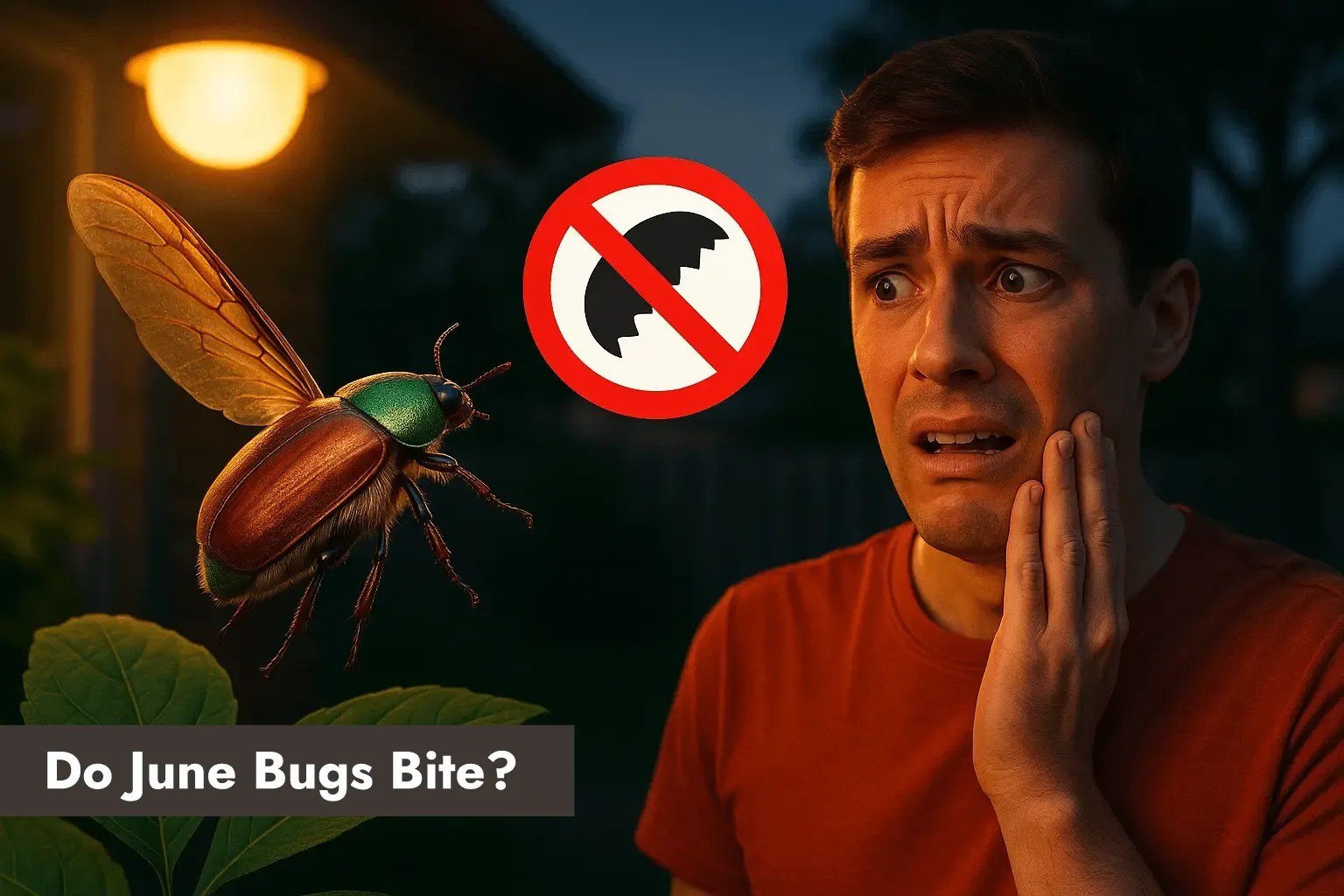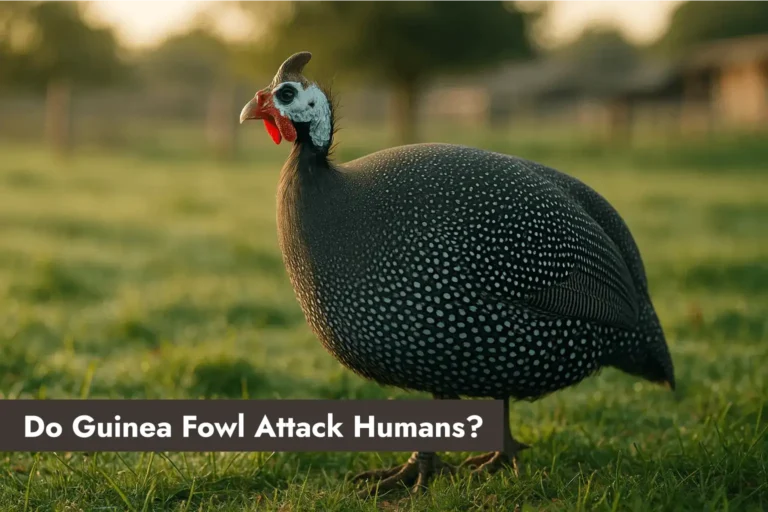Do June Bugs Bite? Here’s the Truth About These Summer Visitors
It’s a typical June evening—warm, breezy, and perfect for sitting outside. But then you hear it: a loud buzz, followed by a clumsy thump against your patio light… or your face. A large brown beetle spirals to the ground, legs kicking. If you’re like most people, your first thought is: “Do June bugs bite?”
Whether you’re a parent, a pet owner, or just not a fan of flying insects, it’s natural to worry when these seasonal critters show up. They’re big, they’re noisy, and they seem oddly persistent. But are they actually harmful?
In this article, we’ll dig into the truth about June bugs—what they are, what they do, and whether they pose any real risk to you, your family, or your lawn. Spoiler alert: it’s not as scary as it seems.
What Are June Bugs?
If you’ve ever wondered what that loud, bumbling beetle smacking into your porch light is, chances are—it’s a June bug.
June bugs (also known as May beetles or June beetles) are a group of beetles from the Scarabaeidae family, and they’re most active during—you guessed it—late spring and early summer. There are several species commonly referred to as June bugs, but two stand out in North America:
- Common June bug (Phyllophaga species): Reddish-brown, about ½ to 1 inch long, and primarily active at night.
- Green June beetle (Cotinis nitida): Slightly larger, metallic green with bronze highlights, more active during the day.
What They Look Like
June bugs are hard-shelled, oval-shaped beetles with stubby legs and short antennae. Their flight pattern is famously ungraceful—they tend to bump into walls, windows, and people, not because they’re aggressive, but because they’re just… well, not great at flying.
Where You’ll Find Them
They thrive in warm, humid regions, particularly across the United States and southern Canada. They’re drawn to light sources at night, which is why they often show up around porch lights, patios, and windows.
Why They Matter
While adults are mostly just a nuisance, the real trouble starts underground. Their larvae—white grubs—live in soil and can cause damage to lawns, gardens, and ornamental plants by feeding on roots. But don’t worry—we’ll get to that.
For now, just know: that buzzing beetle on your screen door isn’t dangerous, but it’s definitely part of the summer experience.
Do June Bugs Bite Humans or Pets?
Let’s get straight to the point: June bugs do not bite humans or pets. They don’t sting either. Despite their size and intimidating buzz, these beetles are completely harmless when it comes to physical contact.
June bugs have chewing mouthparts, but they’re adapted for eating plants, not people. Their mandibles (jaws) are too weak and dull to pierce human or animal skin. If one lands on you and seems to “pinch,” it’s more likely just clinging on awkwardly—not attacking.
Why They Might Feel Uncomfortable on Skin
Some people report a mild prickly or ticklish sensation when a June bug crawls across their hand or arm. This is due to:
- Tiny hooked legs they use for gripping surfaces
- A natural startle reaction because of their sudden landing or buzzing
But that’s it—no venom, no bite marks, no allergic reactions. Just a bit of summer drama.
Are June Bugs Dangerous to Pets?
For the most part, no—but there’s a small caveat.
If your curious dog or cat eats one or two June bugs, it’s not usually a cause for concern. These beetles aren’t toxic or poisonous. However, eating several at once may cause:
- Mild stomach upset (vomiting or diarrhea)
- Digestive irritation, especially in smaller pets
If your pet has a sensitive stomach or shows signs of discomfort after snacking on bugs, keep an eye on them and call your vet if symptoms persist.
Bottom Line
June bugs are more of an annoyance than a threat. They don’t bite, they don’t sting, and they don’t carry diseases. Whether they land on your shoulder or your dog tries to eat one, there’s no real danger—just an opportunity to swat them away and get on with your evening.
Common Myths and Misunderstandings About June Bugs
June bugs are one of those insects that show up for just a few weeks each year—and yet they manage to create a lot of confusion in that short time. Thanks to their size, noise, and erratic flight patterns, they’ve picked up a few myths along the way.
Let’s clear up the most common misunderstandings.
Myth #1: June Bugs Bite Humans
This is by far the most popular misconception. While they may look intimidating and occasionally grab onto skin with their tiny legs, June bugs don’t have the jaw strength or intent to bite you. Their mandibles are meant for chewing leaves, not piercing skin.
Myth #2: They’re Dangerous to Pets
Nope. While it’s not ideal for your dog or cat to snack on bugs, June bugs aren’t toxic or poisonous. At worst, your pet might experience mild digestive upset if they eat too many.
Myth #3: They Sting Like Wasps
Because they buzz loudly and can surprise you by flying into your face, some people assume they sting. But June bugs have no stingers, no venom, and no interest in self-defense. Their erratic flying is more clumsy than threatening.
Myth #4: They’re Aggressive or Try to Attack
Let’s be honest—June bugs are terrible fliers. If one “dive-bombs” your head, it’s not trying to attack. It’s likely disoriented and attracted to your porch light or body warmth.
What June Bugs Actually Do (and Why They Might Land on You)
Let’s face it—when a chunky, buzzing beetle smacks into your face or lands in your hair, it’s hard not to assume the worst. But despite the chaos they seem to cause, June bugs are not acting out of aggression or interest in people. Their behavior is a result of a simple, not-so-smart instinct: follow the light.
Why June Bugs Fly Toward You
June bugs are strongly attracted to light—a behavior known as positive phototaxis. At night, they instinctively move toward artificial light sources like:
- Porch lights
- Street lamps
- Outdoor string lights
- Brightly lit windows
If you’re sitting outside or near a light source, you might accidentally become their next “landing pad.”
Other Possible Attractions
In some cases, June bugs may also be drawn in by:
- Body heat or warmth (especially on cool evenings)
- Moisture or sweat
- Scents from sweet foods, beverages, or lotions
But these aren’t deliberate targets—just side effects of their clumsy navigation.
What They’re Actually Trying to Do
Here’s the truth: adult June bugs don’t have much on their agenda. Their short-lived adult phase is mostly about mating. They don’t build nests, they don’t bite, and they don’t have any real interest in humans or animals.
Most of the time, they’re just flying around aimlessly, looking for a mate, bumping into obstacles, and unfortunately, becoming the uninvited guest at your evening barbecue.
So if one lands on you, don’t panic. It’s not personal—it’s just poor flying.
Are June Bugs Dangerous in Any Way?
June bugs may look and sound intimidating, but they’re not dangerous to humans or pets. Still, that doesn’t mean they’re totally innocent. Let’s break down the different types of “risk” they pose—just not in the ways you might expect.
To Humans: No Real Threat
June bugs don’t bite, sting, or spread disease. They don’t carry harmful bacteria, and they’re not aggressive in any way. If one lands on you, it might cling awkwardly with its legs, but that’s about the worst of it.
You might experience a startled reaction if one crashes into you at full speed (they’re notoriously bad fliers), but there’s no physical harm.
To Pets: Minor, If Any
While June bugs aren’t poisonous, dogs and cats occasionally try to eat them out of curiosity. In small amounts, this isn’t a big deal. However, eating several June bugs in one sitting could cause:
- Mild digestive upset (vomiting or diarrhea)
- Intestinal irritation due to the beetles’ hard exoskeleton
If your pet eats multiple bugs or shows symptoms, monitor them and consult your vet if needed.
To Lawns and Gardens: The Real Problem
Here’s where June bugs actually can be destructive—in their larval stage. The white, C-shaped grubs that live in the soil feed on the roots of:
- Turfgrass
- Garden vegetables
- Ornamental plants
A heavy grub infestation can lead to brown patches in your lawn, wilted plants, and poor soil health. If you’ve noticed dead grass that lifts easily like a carpet, grubs may be the cause.
How to Keep June Bugs Away From Your Home and Yard
June bugs may not bite, but no one enjoys being swarmed by clumsy, buzzing beetles every evening—or waking up to brown patches on the lawn thanks to their larvae. The good news? With a few simple steps, you can deter June bugs naturally and effectively without resorting to harsh chemicals.
Control Outdoor Lighting
Since adult June bugs are highly attracted to light, especially bright white or blue-toned lights, consider:
- Switching to yellow “bug lights” or amber LED bulbs
- Turning off unnecessary lights at night, especially porch, garage, or garden lights
- Using motion-activated lighting to reduce constant attraction
Block Entry Into Your Home
They don’t mean to come inside, but poor fliers often find their way through small openings.
To keep June bugs out:
- Repair window screens and check for holes or tears
- Seal gaps around doors, windows, and vents
- Close doors promptly during summer evenings
Maintain a Healthy Lawn
Preventing June bugs starts underground. Their larvae—grubs—live in your soil and feast on grassroots. Keep your yard less appealing by:
- Aerating your lawn annually to improve soil drainage
- Avoiding overwatering, which creates ideal grub environments
- Applying beneficial nematodes (natural microscopic worms that eat grubs)
- Using milky spore powder, a natural bacterium that targets Japanese beetle grubs
Invite Natural Predators
Encourage animals that help keep June bug populations in check:
- Birds (like robins and crows)
- Frogs and toads
- Bats (install a bat box!)
- Chickens or ducks, if you have a backyard flock
Use DIY Traps (If Needed)
A simple light-and-soapy-water trap can catch dozens overnight:
- Fill a shallow bowl or pan with water and dish soap
- Place it under a porch light or outdoor lamp
- Bugs are attracted to the light, fall in, and can’t escape
When to Call a Pro
If you notice recurring lawn damage or heavy infestations, it might be time to consult a pest control expert. They can identify whether June bug grubs or another pest is causing the issue.
Expert Insight: What Entomologists Say About June Bugs
While personal experiences and internet forums can offer plenty of opinions, it’s always helpful to hear what the experts say. According to entomologists—scientists who study insects—June bugs are harmless to humans and pets, but they play a more complex role in the environment than most people realize.
Not Aggressive, Just Awkward
Dr. David Shetlar, an entomologist at The Ohio State University, confirms that June bugs do not bite and are “completely harmless to humans.” Their clumsy flight and accidental collisions are often mistaken for aggression, but in reality, they’re simply poor navigators drawn to light sources.
Larvae Are the Real Problem
Experts also point out that it’s not the adult June bugs you need to worry about—it’s the grub stage. According to university extension services, a lawn with as few as 10 grubs per square foot can start showing visible damage. Entomologists recommend aeration, biological control (like nematodes), and monitoring to keep populations under control.
A Natural Part of the Ecosystem
June bugs aren’t just pests—they also serve a purpose. Birds, small mammals, and even other insects feed on them and their larvae, making them a valuable part of the food chain.
Final Word From the Pros
Entomologists agree: there’s no need to fear June bugs. With a little understanding and some proactive lawn care, you can manage their presence without panic—or pesticides.
Final Thoughts: Should You Worry About June Bugs?
In short: no, you don’t need to worry about June bugs.
While they may be big, noisy, and a bit clumsy, June bugs don’t bite, sting, or pose any real danger to people or pets. They’re simply seasonal visitors drawn to lights and warm evenings—more awkward than aggressive.
The only real concern lies beneath the surface. If your lawn is suffering from brown patches or thinning grass, June bug larvae (grubs) could be the root of the problem. But even that’s manageable with proper lawn care and natural pest control strategies.
Quick Takeaways:
- No, June bugs don’t bite humans or animals
- They won’t hurt your kids or pets
- Adult beetles are mostly harmless—it’s their grubs that can damage lawns
So, the next time one buzzes by your porch or lands on your arm, remember: it’s not an enemy—it’s just a bug with bad aim.
FAQs About June Bugs
Looking for quick answers about June bugs? Below are some of the most common questions people ask—especially during peak summer evenings when these beetles seem to be everywhere.
No, June bugs do not bite humans. While they have chewing mouthparts, they’re not strong or sharp enough to break human skin. If one lands on you and you feel a slight pinch, it’s just their little legs trying to grip—not an actual bite.
Not really. June bugs are not poisonous or venomous, so a dog or cat that eats one or two probably won’t suffer more than mild stomach upset. However, if a pet eats several in one sitting, it could cause digestive issues like vomiting or diarrhea. When in doubt, contact your vet.
It may feel personal, but it’s not! June bugs are drawn to light, warmth, and movement—and they’re clumsy fliers. If you’re standing near a porch light or wearing bright clothing, they may accidentally collide with you. They’re not aggressive; just poor navigators.
Yes—but only in their larval (grub) stage. June bug larvae live in soil and feed on grass roots and plant matter, which can lead to yellow patches or dead spots in your lawn. Adult June bugs do minimal damage by comparison.
Adult June bugs only live for a few weeks in the summer, usually from late May through early July. However, their larvae can live underground for up to three years, depending on the species and environmental conditions.
Yes, June bugs make a distinct buzzing or whirring sound when they fly, which often startles people. The noise comes from their wings, not any vocal sounds, and it’s completely harmless—just another quirk of their awkward flying style.
To keep June bugs away without chemicals:
– Switch to yellow bug lights
– Limit outdoor lighting at night
– Maintain a healthy, well-aerated lawn
– Introduce beneficial nematodes to control grubs
– Set up DIY light-and-soap traps
These methods reduce both adult beetle activity and grub populations over time.
No. June bugs can’t pierce skin, let alone clothing. If one lands on your shirt or pants, it may feel uncomfortable or itchy, but there’s no risk of being bitten through fabric or otherwise.



